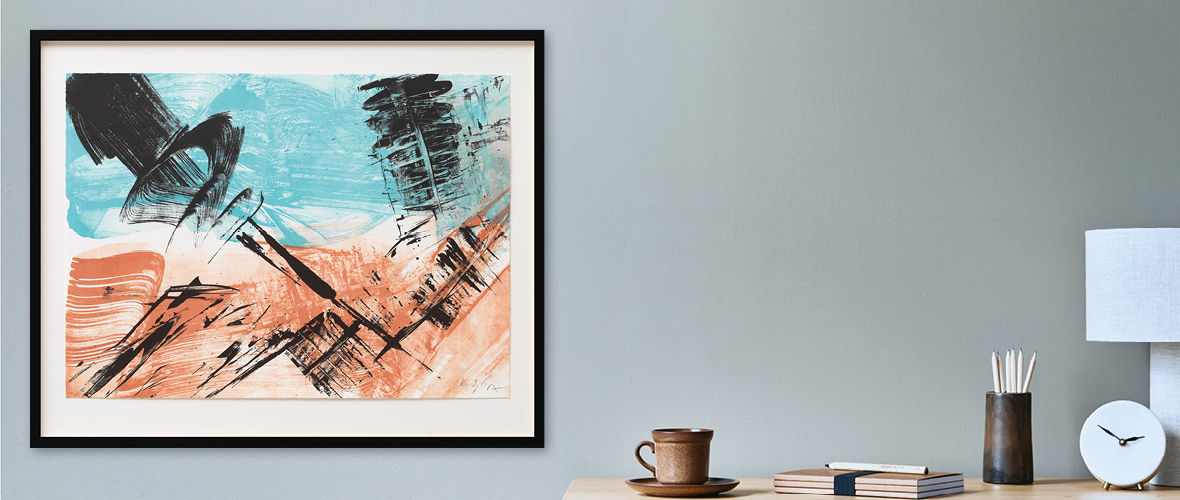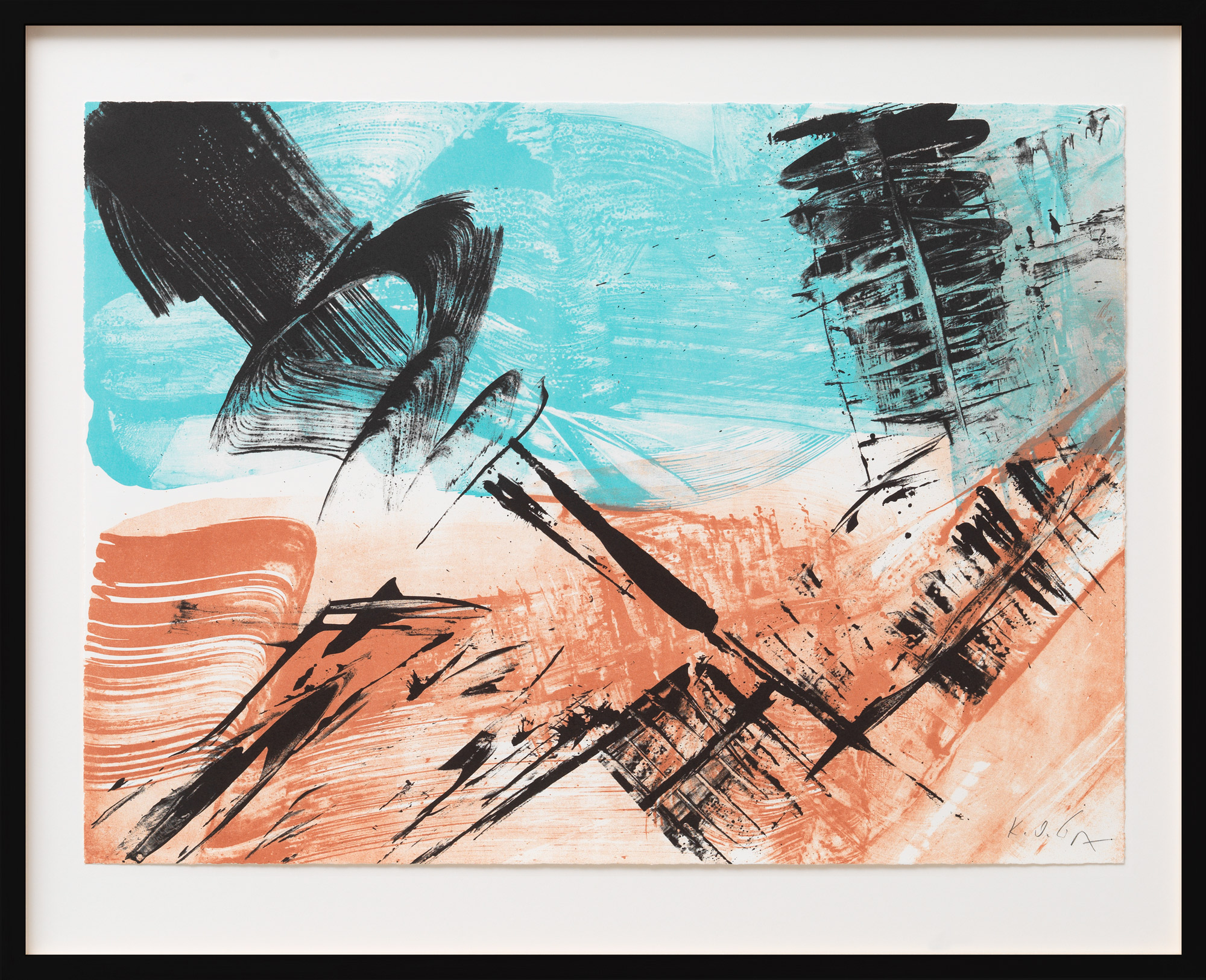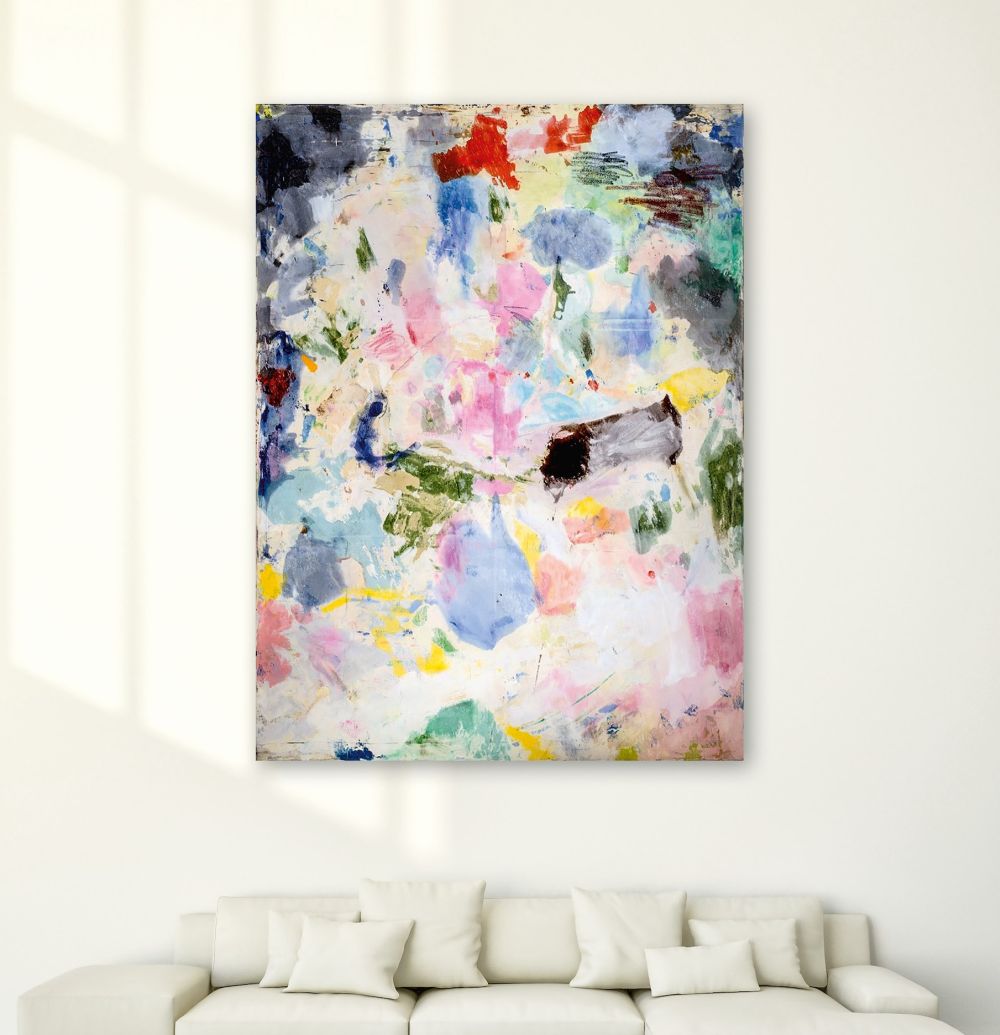
Informalism: Freedom for Painting!
From the mid-20th century, revolutionary changes in painting emerged in Europe and the United States. Art movements such as Informalism or Abstract Expressionism shared the fundamental idea that painting should be freed from the constraints of formal conditions. It should not be bound by rules, styles, predetermined messages, pictorial subjects, structures, and forms.
In practice, this meant abstract painting in its purest and most consistent form. With its courage to radically liberate painting, Informalism is considered one of the last fundamental innovations in art. Initially, the pioneers of Informalism, caused many contemporaries to shake their heads because of their wild painting style and somewhat chaotic works. However, today, their achievements are fully recognised, and their artworks are represented in prestigious museums and collections and highly sought after in auctions.
Informal painting and related styles made numerous artists world-famous, such as Jackson Pollock, K.O. Götz, Hann Trier, Mark Rothko, and Jean Dubuffet. The impulses of Informalism continued to influence artists for decades and still inspire contemporary artists today.

Informal Painting - A Radical Departure From Traditional Pictorial Composition
The pioneers of Informalism sought new been searching for new and unburdened forms of artistic expression in painting. They considered the traditional approach, where artists first developed an idea of a motif and then executed it according to specific technical requirements and stylistic compositional principles, as outdated and restrictive.
Therefore, the artists of Informalism questioned the entire, long-established process of painting - from image content to materials. They advocated for a liberated act of painting that would directly and authentically express the artist's inspiration and emotions. K.O. Götz, one of the most important German representatives of Informalism, described his work as "the dissolution of the classical principle of form with many possibilities in terms of painting and materials."
By eliminating all creative rules and real motifs, the act of painting itself took centre stage and became an end in itself. The artists did not execute preconceived motifs, designs, or sketches in the painting process, nor did they adhere to traditional forms, patterns, or structures. Instead, they allowed their works to emerge through spontaneous, impulsive, and improvised actions. Each painting process initiated a new, unplanned experiment in which chance also played a significant role.
As a result, the paintings usually contained nothing that could be associated with familiar objects or forms. This absence of recognisable subject matter opened up a wide space for free associations and interpretations for viewers.
Colour and the Painting Process as the Content of Art
The idea of painting that is its own subject also demanded new approaches and techniques. All materials that were previously only means to an end now had inherent value. This primarily affected colours, which gained significantly greater importance. They now determined the visual impression of the painting solely through their structures, luminosity, and contrasts with each other. The range of materials also expanded. Artists mixed their oil or acrylic paints with other substances to influence viscosity. K.O. Götz, for example, mixed his paints with paste creating impasto, almost sculptural structures on the canvas.
Not only did the materials change, but the creative process itself also transformed. The act of painting now resembled a performance, with artists constantly interacting with the materials and what had been created so far. With full physical engagement and large gestures, they would fling, pour, blend, or drip their painting substances onto the canvas. Through this partially uncontrolled application of paint, the painters of Informalism created imageries full of dynamics, drama, and expressiveness.

Informalism, Abstract Expressionism, and More: Different Names - A Shared Vision
The trend of completely redefining painting emerged in several countries almost simultaneously after the end of World War II but under different names. Free, non-representational, and impulsive painting appeared in numerous artistic movements, such as Abstract Expressionism, Tachism, Lyrical Abstraction, Action Painting, Colour Field Painting, and Art Brut. In Europe, the term Informalism soon became established.
Its origin can be traced back to 1951 in Paris. The French art critic Michel Tapié (1909-1987), an important promoter of the avant-garde in France, organised a major exhibition with numerous contemporary artists, which is now considered the birth of Informalism. The title of the exhibition, "Signifiants de l'Informel," gave the new art movement its name.
In Germany as well, numerous artist groups were formed afterwards, such as "Junge Westen" in Recklinghausen, "ZEN 49" in Munich, "Gruppe 53" in Düsseldorf, or "Gruppe 11" in Stuttgart, where artists organised themselves and made informal painting one of the most important forms of expression in the 20th century.
